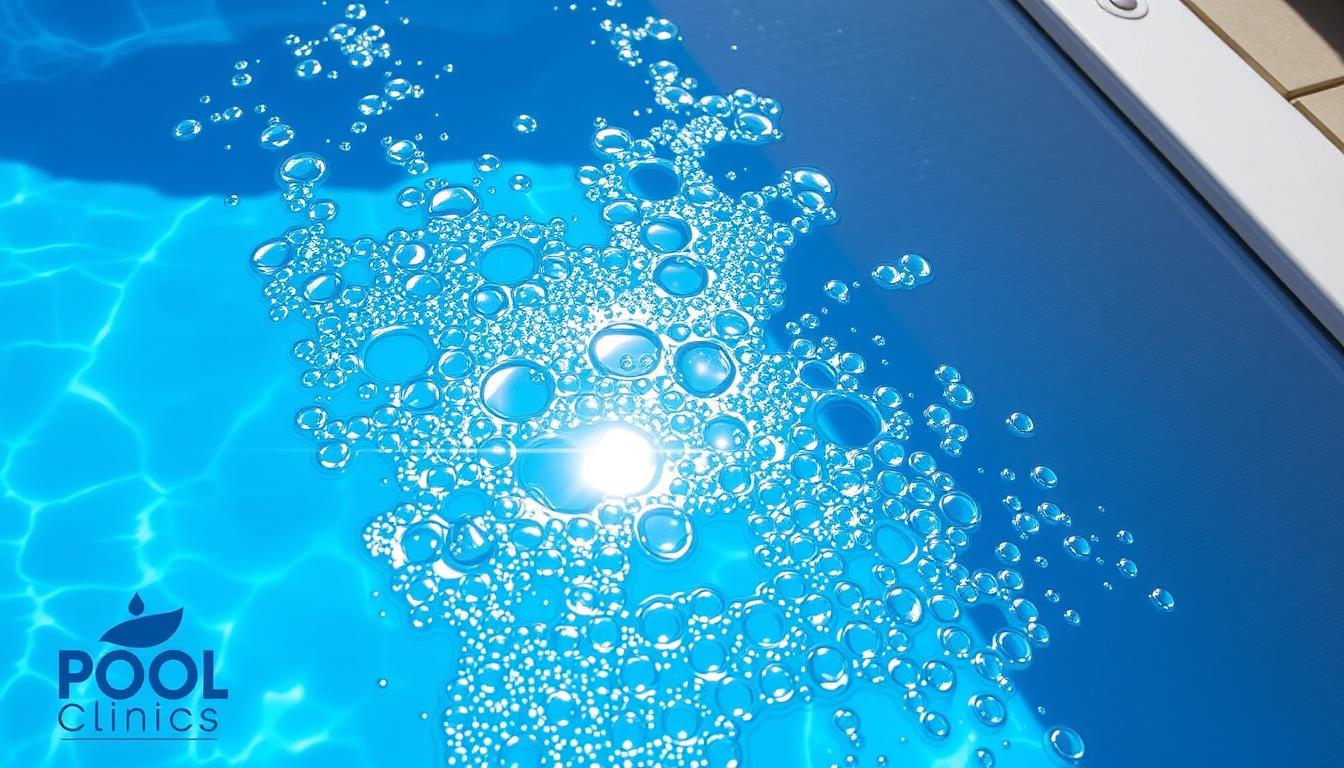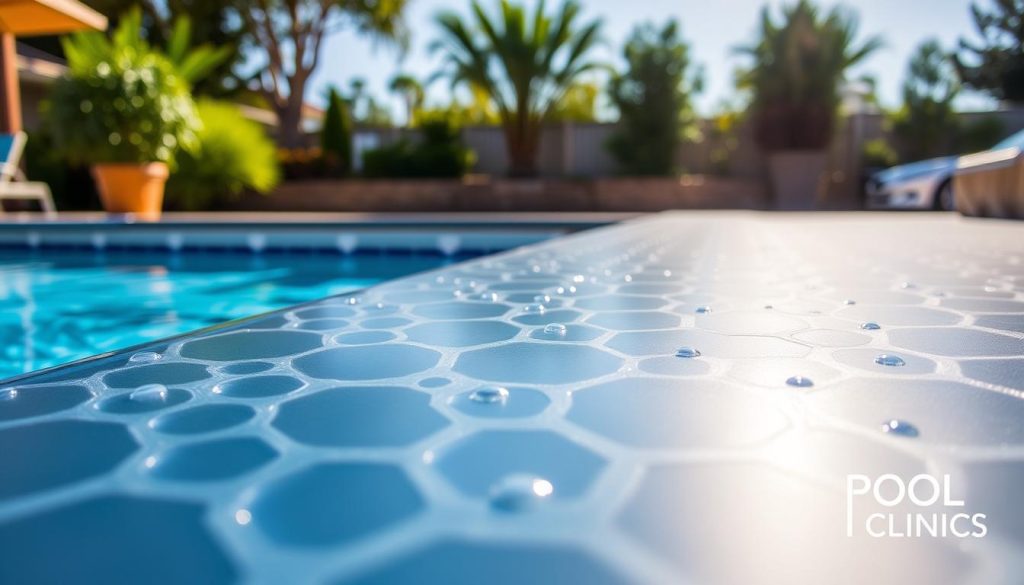
Solar pool covers are a great way to keep your pool warm. Many pool owners wonder if the bubbles should face up or down. The answer can greatly affect your cover’s efficiency.
Proper bubble placement is key for heat absorption. It also helps transfer heat into the pool water. This guide will explain why bubbles down is the best choice.
We’ll explore the science behind solar pool covers. You’ll learn expert tips for installation and maintenance. This knowledge will help you keep your pool warm and comfortable.
Key Takeaways
- Placing solar pool cover bubbles down is recommended for optimal heat absorption and transfer into the pool water.
- Solar covers work best when covering the entirety of the pool to reduce heat loss through evaporation.
- Trim solar covers closely to the pool wall, allowing some excess for shrinkage.
- Most solar pool covers are designed to float on the water’s surface with the bubble side down.
- Using a roller makes it easier to handle and store the solar pool cover.
- Store solar pool covers rolled up or folded in a clean, dry place during the off-season.
Understanding Solar Pool Covers and Bubble Placement
Solar pool covers help maintain water temperature and reduce heating costs. They trap heat from the sun and transfer it into the water. These covers also create a barrier that minimizes heat loss through evaporation.
Proper bubble placement is crucial for maximizing effectiveness and extending the cover’s lifespan. Understanding how solar pool covers work can help you get the most out of them.

How Solar Pool Covers Work
Solar pool covers float on the water’s surface, creating a barrier between water and air. The cover’s bubbles face down into the water, trapping heat from the sun. This process helps maintain consistent water temperature and reduces the need for additional heating.
Solar covers can be used year-round but are most effective on sunny days. To ensure optimal performance, choose a cover that fits your pool perfectly. The cover should line up with the pool edges for a snug fit.
The Importance of Proper Bubble Orientation
The bubbles on solar pool covers should always face down into the water. This orientation allows the cover to effectively trap and transfer heat into the pool. It also maximizes the cover’s insulating properties.
Downward-facing bubbles create small air pockets that act as insulation. This prevents heat from escaping the water and maintains a consistent temperature. The downward orientation also protects bubbles from sun damage, extending the cover’s lifespan.
| Solar Cover Thickness | Durability | Insulation |
|---|---|---|
| 8 mils | Good | Moderate |
| 12 mils | Better | Good |
| 16 mils | Best | Excellent |
When choosing a solar pool cover, consider the material thickness. Thicker covers, from 8 to 16 mils, provide better insulation and durability. A 12-mil cover offers a good balance between heat retention and longevity.
UV-resistant covers can further extend your solar cover’s life by protecting it from sun damage. By using solar covers correctly, you’ll keep your pool warm and save on energy costs.
Bubbles Up or Down on Solar Cover: The Verdict
Experts agree that bubbles on solar pool covers should face downward into the water. This placement ensures efficient heat transfer from the sun to the pool water. The downward-facing bubbles trap heat and transfer it directly into the water.
Expert Recommendations for Optimal Heat Transfer
Maximize your solar pool cover’s effectiveness by placing bubbles face down in the water. The sun heats the air trapped in the bubbles. This heat then transfers into the pool water, raising and maintaining temperatures.
Direct contact between bubbles and water is crucial for optimal heat transfer. That’s why placing the cover with bubbles facing down is so important.
Potential Damage from Incorrect Bubble Placement
Installing your solar pool cover with bubbles facing up can damage them over time. Without water contact, bubbles absorb heat but can’t transfer it to the pool. This may cause overheating and bubbles peeling away from the cover’s base layer.
To extend your solar pool cover’s lifespan, always ensure bubbles face down into the water.
Tips for Proper Solar Cover Installation
Install your solar pool cover correctly to maximize its benefits and longevity. Place the cover on your pool with bubbles facing down for best performance. Ensure the cover fits snugly, covering the entire pool to minimize heat loss.
Consider using a roller or reel system for easy deployment and removal. Secure the cover to the roller using attachment kits for convenient handling.
When not in use, store your solar cover rolled up or folded in a clean, dry place. Alternatively, keep it on the roller with a protective cover to shield it from the elements.







